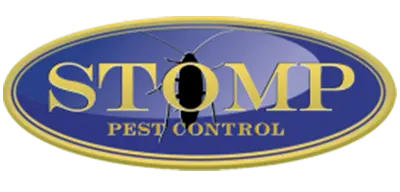What do termites look like?
North Carolina is home to several species of termites but most of them look very similar. They are usually between ¼ of an inch and ½ of an inch long, soft bodies, and can range from white to light brown in color. Some termites have wings.
Do I have winged ants or termites?
Since some termite species have wings, they are often confused with winged ants. Telling the difference is relatively simple, though. Both termites and flying ants have four wings each, but termite wings are all the same size and much larger than their body. An ant’s wings are more proportionate with their body and their top wings are bigger than the bottom wings.
Another way to tell the difference between winged ants and termites are their antennae. Termite antennas are straight while flying ant antennae are bent at a 90 degree angle. Flying ants can chew through wood but they are not as destructive as termites. Still, if you think you have a flying ant infestation, it’s important to treat it.
What are signs of a termite infestation?
Aside from visible damage done by termites, here are a few signs of infestation:
- A faint clicking sound in your walls
- Drooping drywall or pinpoint holes in your drywall
- Peeling paint that looks like water damage
- Buckling wooden floorboards
- Discarded wings (they look like fish scales when discarded)
- Wood that sounds hollow (termites eat wood from the inside out)
- Tight doors and windows that are hard to open (especially if the weather has been cool and dry lately)
- Tunnels in wood and mud tubes from the infestation to their colony
- Termite droppings (small black marks and a dark powdery substance around the infestation area)
How did termites get in my house?
To survive, termites need food (such as wood), moisture, and warmth. You can see why they like homes so much!
One of the most common ways termites get in your home is through wood that comes into contact with the ground.This includes door frames, deck posts, and porch steps/supports. Drywood termites can enter your home on any floor, not just the ground floor. They burrow into crevices in the wood and start building their colony. Keeping the wood on the exterior of your home in good shape is key to preventing termite infestations.
Do I need to worry about termites if my home is stucco?
Many people think that having a stucco home protects them from termites. This couldn’t be further from the truth. Typically, the stucco finish extends beneath the soil level around the outside of your home. This creates a small space between the foundation and the stucco finish that is perfect for termites. Because they’re entering underground, you won’t be able to see them and you might not realize you have an infestation until it’s too late.
Are termites dangerous?
Termites are not dangerous to humans but they cause $5 billion worth of property damage in the US every year.
What kind of wood do termites eat?
Termites eat most types of wood, including those used in commercial lumber. In fact, redwood and cedar are the only naturally termite-resistant woods and even so, only parts of these woods are resistant to termites.
Pressure treated wood is termite resistant, but it is not termite proof. If pressure-treated wood stays damp, termites will infest it. Further, when pressure treated wood is used in construction, it is cut and drilled, exposing parts of the wood that were not treated and are therefore not protected against termites. Even if the wood used in your home was pressure treated, you should still be vigilant in looking for signs of termites.
Can termites eat through concrete?
Termites cannot eat through concrete, but they can fit through cracks in concrete (and stucco) that are as small as a business card.
How long does it take to get rid of termites?
After your termite treatment, the colony will usually begin dying off within a few days. It may take a few days for all of the termites in the colony to come into contact with the chemical and die.
When you DIY termite treatments, you cannot get as far into the colony as a professional exterminator. Many people that try to treat termites themselves miss the termites that are further in and because they cannot see them, believe they’ve killed the entire colony. Unfortunately, these people end up dealing with the infestation again in a few weeks or months.
Does the whole house need treatment, or can I just treat where the termites infested?
Treating around the entire perimeter of the house is the best way to treat and prevent termites. Only treating where there is currently a colony of termites leaves the rest of the area around your home vulnerable to infestation.
How can I prevent termites in the future?
There are several things you can do to protect your home from termite infestations in the future:
- Keep an 18 inch gap between soil and any wooden parts of your home
- Store firewood at least 20 feet from your house
- Schedule an annual inspection to catch infestations early
- Replace loose mortar and weather stripping around your basement windows and foundation
- Reduce the amount of moisture in and around your home, as termites thrive in damp conditions
- Keep an eye on any exterior wood (posts, window frames, door frames, skirting, etc)

